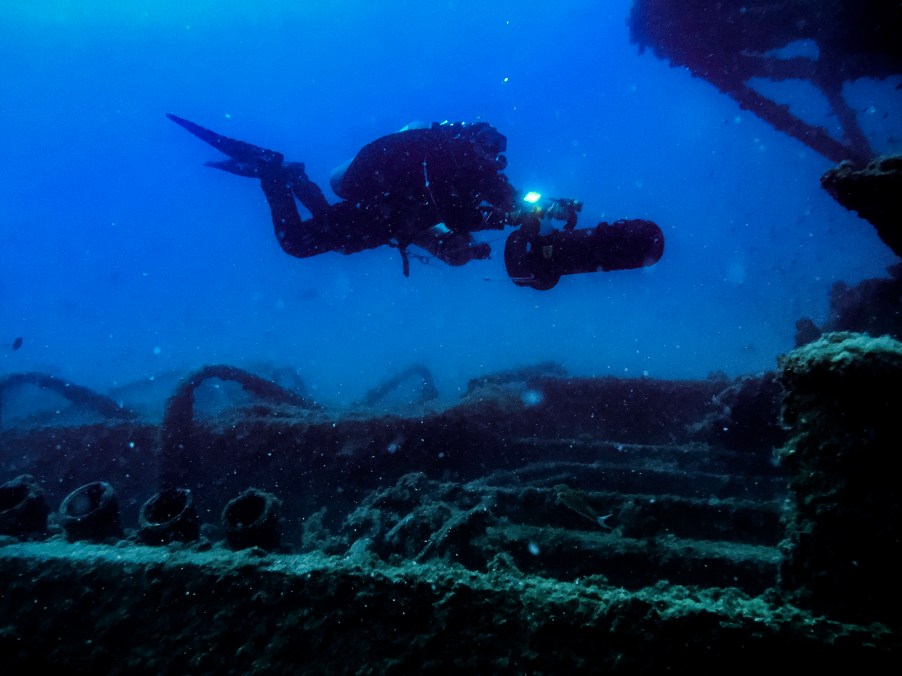
How Does a Sea Scooter Work?
If you love scuba diving or just playing around in the water, sea scooters can be handy marine accessories. Sea scooters, which aren’t what you might think of when you hear the word scooter (they don’t have any wheels), are growing in popularity. They’re great for scuba diving, especially if you have to carry extra gear for more technical dives, and they’re usually light enough that if the battery dies, you can still tow it back to your boat or the shore.
So, besides not having wheels, what exactly are sea scooters, and how do they work?
What are sea scooters?

According to Adreno Scuba Diving, sea scooters are water-propelled devices that allow divers to move faster and more efficiently underwater. You can use these devices for recreational diving, technical diving, and snorkeling in lakes, swimming pools, and even the open ocean. Adults and children can use them, and they can even be used as a surfboard accessory. They’re also known as diver propulsion vehicles (DPVs), aqua scooters, and underwater scooters.
How do they work?
Rechargeable batteries almost always power sea scooters. Typically using one or two propellers located at the rear of the scooter, a basic propeller system provides forward propulsion. Sea scooters typically don’t go very fast, making them easy to control, and they take away some of the hard work involved in diving. Also, sea scooters stop if the throttle is not engaged, meaning if you let go, the DPV won’t float away.
Popular sea scooter models
There are quite a few models of sea scooters to choose from, with prices ranging from around $300 to $4,000. They also come in different weights, depth capabilities, and battery life.
ANIWAA lists 12 of the best sea scooters with a wide range of capabilities and prices. Yamaha has five models on the list, including the cheapest option, the Seal, which retails for only $295. It has a 90-minute battery life, a maximum depth of 15 feet, and a body weighing 11.5 pounds. Yamaha also makes two models with the longest battery life of 120 minutes: the 275L and RDS250.
The lightest model on the list is the Sublue WhiteShark Mix, weighing only 7.7 lbs. It costs $699 and has a maximum depth of 131 feet and a battery life of 30 minutes.
The two most expensive sea scooters on the list can also go the deepest, at 230 feet. The Apollo AV-2 Evolution 2 costs $1,995, has a battery life of 100 minutes, and weighs 47 pounds. The TUSA SAV-7 EVO-2 costs $3,799, has a battery life of 110 minutes, and weighs 45 pounds.
And if you are looking for a speedy DSV, the Hoverstar AquaJet Dive H2 is the fastest on the list, traveling up to 5.6 mph. It weighs 31 pounds, has a maximum depth of 66 feet and a battery life of 100 minutes, and costs $1,599.
So if you’re looking to get into more watersports or you’re already a proficient diver, a sea scooter is a great accessory. And you definitely don’t have to spend a lot of money to get one. A DSV can be tons of fun, whether you’re playing in the pool or doing extensive diving or snorkeling. Just don’t use it to try to evade the FBI as one guy did. Spoiler alert: It didn’t work.


